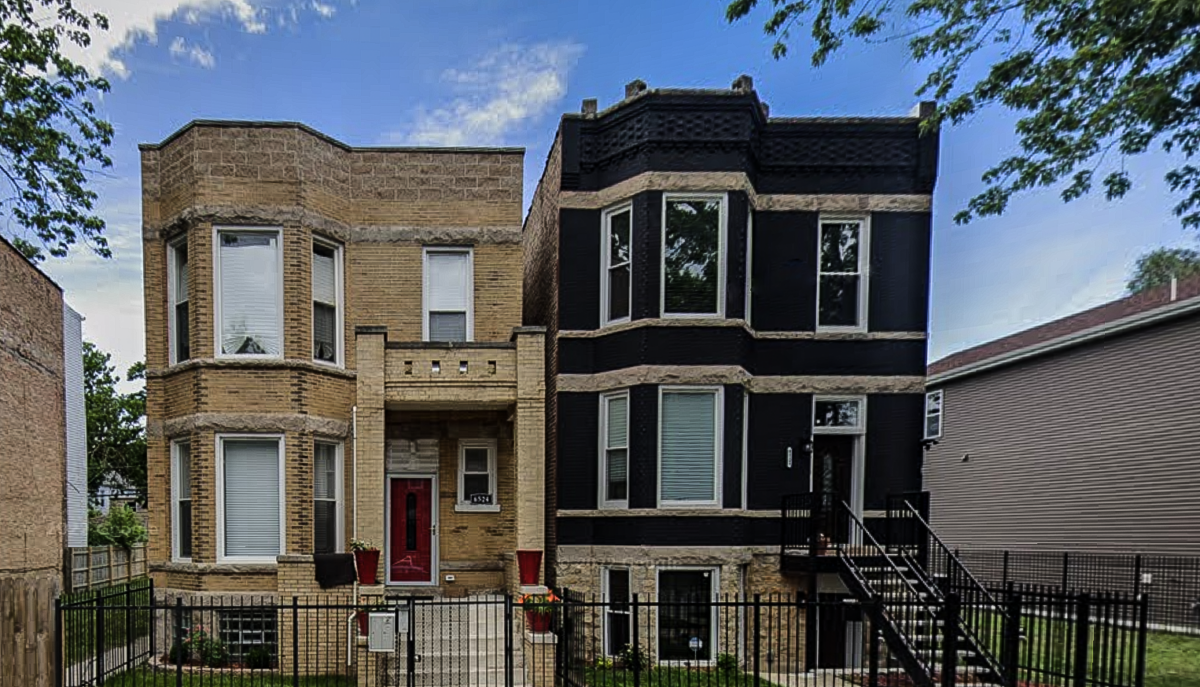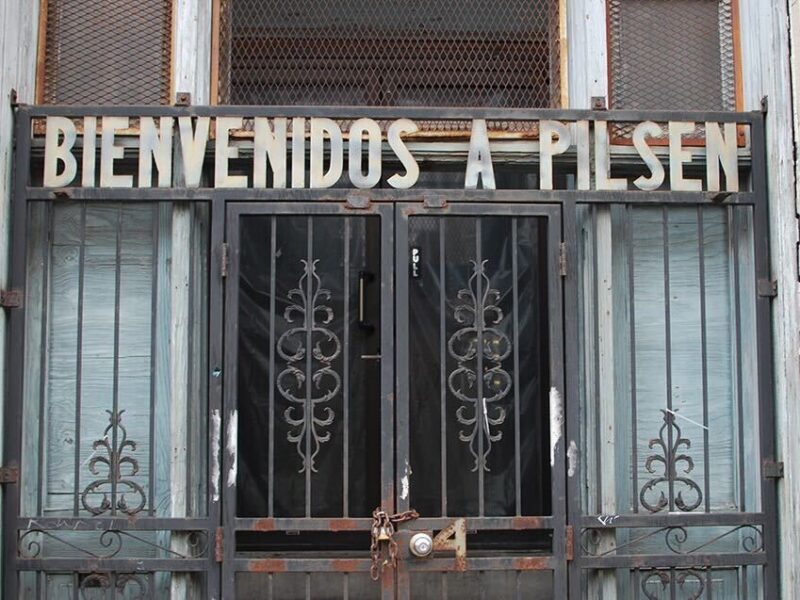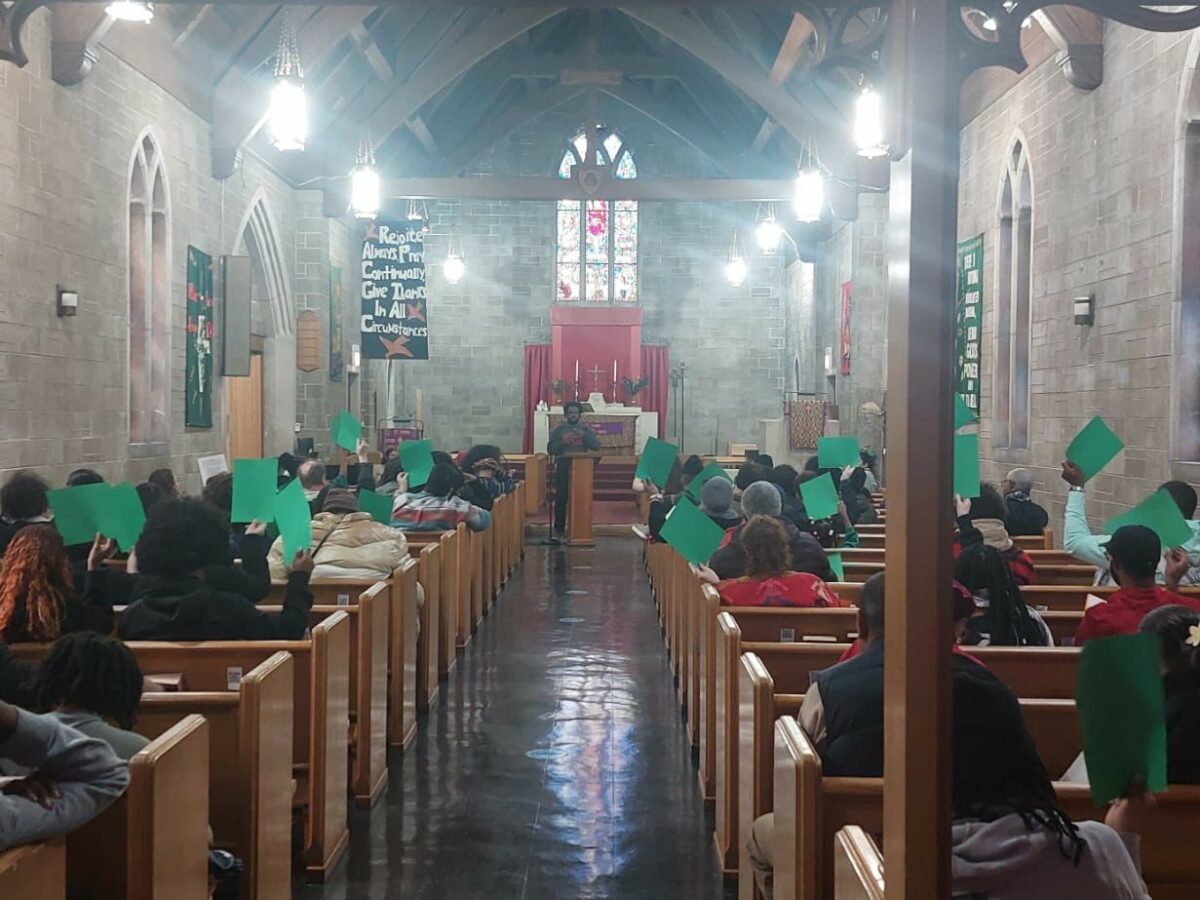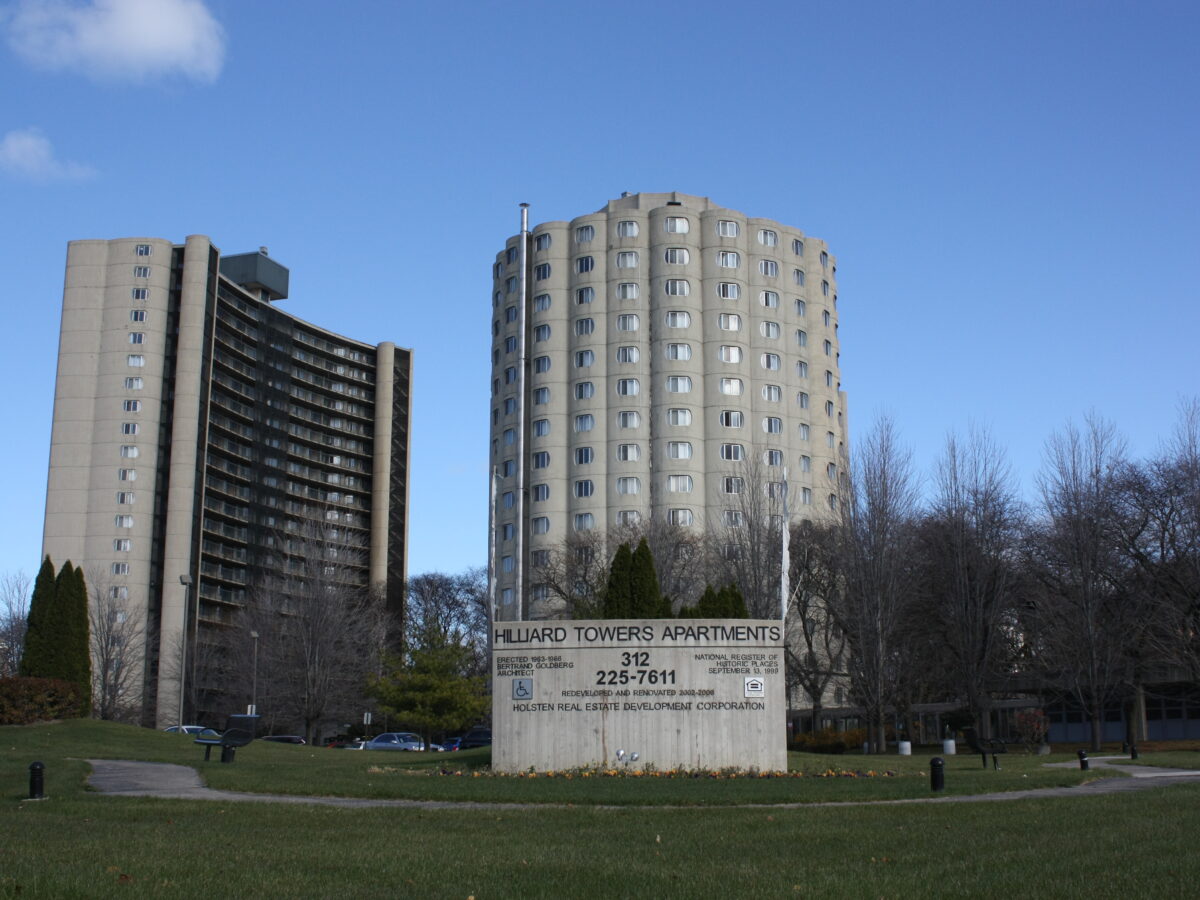If Chicago has a signature building, it’s two-to-four-flats. From vintage greystones to multi-story cottages, these small, multi-unit apartments are scattered across the city—they usually make up two or more apartment dwellings stacked on top of each other.
But between 2012 and 2019, Chicago lost over 4,800 of these types of buildings. Nearly half were transformed into single-family homes, permanently removing rental units in the area, according to a 2021 report from the Institute for Housing Studies (IHS) at DePaul University. While this trend is more prevalent in North and Northwest Side neighborhoods, it also emerged in neighborhoods on the South Side, including Grand Boulevard, Bridgeport, and the Lower West Side (most of which is Pilsen), which all saw upticks between 2013 and 2019.
Many of the neighborhoods where deconversions are happening have also become hotspots for gentrification in the past decade—something it’s helped exacerbate by reducing the amount of affordable housing in their neighborhoods.
In the past five years, Chicago Lawn saw nineteen deconversion applications, Woodlawn nine, Gage Park nine, Bridgeport eight, and Grand Boulevard seven. It’s significantly less than what a rapidly gentrifying neighborhood like North Center is experiencing, which leads the city with forty-three deconversion permit applications in the same time span. But it’s also a sign that the deconversion trend could spread elsewhere.
Two-flats have often been dubbed the “workhouse” of Chicago’s housing stock and for good reason. Many of these buildings date back to the early 1900s as the city’s first-generation, Eastern European immigrants began assembling two-, three-, and four-flats from mail-order catalogs. Building multi-story units helped larger families spread out while also creating ways to earn extra income by renting out the other units to tenants.
“They were largely built for immigrant families, who were working in nearby industries. The reason there were two-flats is because that was often the structure—a family living on one floor and relatives living on another unit,” said Geoff Smith, director of the Institute for Housing Studies at DePaul University.
Today, they make up over a quarter of residential housing in Chicago, circling from the lakefront through South and West Side neighborhoods. They hold a significant portion of the city’s affordable housing and 73 percent of the rental units in these types of buildings are occupied by a person of color.
Deconversion is becoming much more common in North and Northwest Side neighborhoods, where high-cost neighborhoods like North Center, Lakeview, and West Town are losing small multi-unit buildings and leaving single-family homes in their place. “In a lot of the more expensive neighborhoods, they’re fully built out, so there’s not a lot of vacant land to build new housing on,” Smith said. “You saw changing demand from higher-income families…but there weren’t any single-family homes for them to live in because those areas don’t have that many single-family homes historically.”
As higher-income families move in, many want the bigger space and privacy that single-family homes provide and are willing to pay a premium. For developers, deconversion offers a cheaper way to meet that demand and raise property values, rather than building a new single-family home from scratch.
“When developers see that situation, they look to, how can we create new single-family homes and the lowest value housing type are either older single-family homes, or two-flats, which were pretty common types of housing in those neighborhoods,” he added.
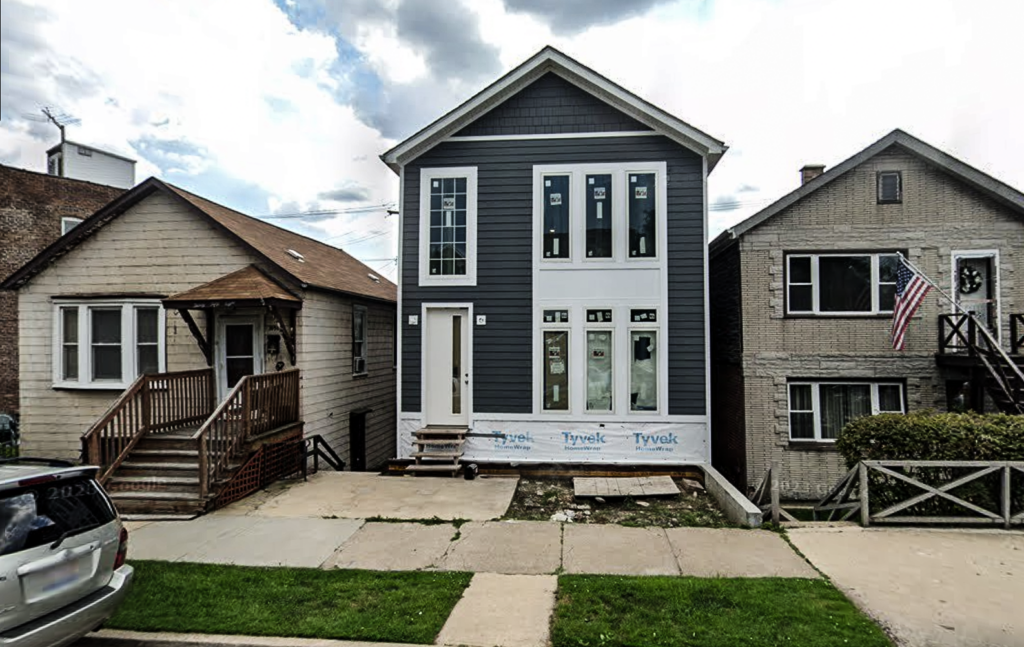
Two-to-four-flats make up what experts consider a “missing middle” of affordable housing— essentially rental housing that’s affordable to most residents in the area but not subsidized by the government. They tend to be more affordable because they’re often run by smaller-scale, “mom-and-pop” landlords or owner-occupants who live in one unit and rent out the other.
“Two to fours represent naturally occurring affordable housing, often because they are owner occupied, and so they are making units available. It might be somebody that they know, a friend of a friend, or a family member, and there’s a network effect of people identifying those units, and the mom-and-pop owner perhaps are more inclined to offer an affordable rent for the right tenant,” said Maggie Cassidy, director of The Preservation Compact, a policy collaborative working toward preserving affordable rental housing.
Two-to-four-flats often carry cheaper rents precisely because they’re older buildings. New affordable housing can be surprisingly expensive to build, and developers want to recoup the costs of construction. Once older units like this disappear, that affordability is hard to replace.
“That’s a direct, obvious way to see gentrification on the landscape because you’re taking what was historically one of the more reliable forms of naturally occurring affordable housing in Chicago and turning it into a source of housing that is not affordable,” said Winifred Curran, professor of geography at DePaul University.
Deconversions to single-family homes don’t necessarily cause gentrification in working-class neighborhoods. But once real estate interest spikes in an area, deconversions can exacerbate it which reduces the number of affordable rental units in the area and creates more luxury housing in the process, said Curran.
“Two-flats are kind of this historical anomaly. It’s reflective of a period of time, of housing development, and we don’t really do that so much anymore, so they tend to be in neighborhoods that are zoned for single-family use,” Curran said. “If you’re looking for a large, single-family home in the city of Chicago, a great way to get it relatively more affordably than building a ‘McMansion’ from scratch is to deconvert a two-flat.”
“That’s a direct, obvious way to see gentrification on the landscape because you’re taking what was historically one of the more reliable forms of naturally occurring affordable housing in Chicago and turning it into a source of housing that is not affordable.”
Winifred Curran
Part of the problem comes from how our zoning code is designed. Many of the city’s two-to-four flats are located in single-family zones, where building multi-unit housing nowadays is prohibited. Most of these buildings escaped these regulations because they’re older than Chicago’s zoning ordinance itself, but once deconverted, they can’t go back to multi-unit housing.
And in areas that allow multi-unit buildings like two-to-four-flats, nothing usually prohibits people from turning them into single-family homes. It’s something that has made deconversions harder for the City to notice or take policy action against, Curran said.
In 2021, the City Council passed two anti-deconversion ordinances, trying to penalize developers from taking on deconversions in different gentrifying neighborhoods along the 606 and in Pilsen. In 2021, Pilsen saw an immediate drop-off in deconversions, while neighboring areas continued at similar rates.
At the same time, some are optimistic that more homeowners will take advantage of two-flat ownership and preserve the forms of affordable rental that those buildings provide.
“Maintaining an intact flat may become a more attractive option for families than it was five years ago, where a deconversion might be more cost-effective,” Cassidy said. “We may be trending in a direction where maintaining the property as the most cost-effective, and that people are thinking about having flexible spaces and generational living opportunities to have the income stream of a unit or two.”
That opportunity for wealth building was what drew LeNnierre Watkins to buying and fixing up multi-unit buildings. In 2019, he closed on a two-flat in Woodlawn and began living in one unit and renting out the other. The building needed a lot of rehab, but it’s a process he always pitches to people looking to buy a home.
“You get to learn how to manage the business, so for a lot of people, it’s an opportunity to learn how to become more professional. It’s an opportunity to learn how to help other people because people move in, and you get to learn how to be the landlord that you would like to have rented from, as opposed to someone who acts as though [they’re] doing the tenant such a favor and not acting like it’s not doing a favor for themselves,” he said.
RELATED STORY
Are Airbnbs Fueling Gentrification in Pilsen?
Two-flats were also being lost to demolitions and disinvestment across the city. Approximately 30 percent were replaced by non-residential uses, and in lower-cost neighborhoods on the South and West sides, most of the demolished two-flats became vacant land. Compared to demolitions, Cassidy characterizes deconversions as the lesser of two evils.
“When I think of the South Side and the housing stock that exists there, a deconversion of a two-flat to a single family that results in the loss of an affordable unit is an extremely unfortunate event. [But] the loss of an entire building because there is not a buyer or somebody who wants to take that on rehab it as a two-flat? That’s a much worse outcome,” she said.
Those missing two-to-four-flats usually went to foreclosure, especially during the Great Recession. Between 2013 and 2019, Greater Englewood and New City each lost around ten percent of these multi-unit buildings to foreclosure. Community organizations, like Neighborhood Housing Services (NHS), are trying to circumvent this loss by helping small-scale landlords avoid losing buildings like this to foreclosure.
“When an eviction occurs in one of these properties, the economic shock to the owner is more significant,” said NHS President and CEO Anthony Simpkins. “If you get three units in the property, and one of them is not paying rent, that can be a really harsh economic burden for the owner, which can push the owner into foreclosure. At the same time, if that tenant’s evicted, that tenant is now struggling to find another affordable apartment.”
When two to four flats disappear from a neighborhood from deconversions or disinvestments, the affordable housing they hold is often lost for good. And there’s a lot at stake for people whom higher rents could displace.
“You’re going to have fewer people in the neighborhood because there aren’t places for them to live…those people are leaving schools, they’re leaving maybe jobs, they’re leaving businesses,” Curran said. “Everyday businesses that relied on the population that was there when it was a more working-class affordable neighborhood may not be able to survive in a gentrified neighborhood.”
Reema Saleh is a writer, journalist, and digital media producer. She last wrote about post-COVID clinics in Chicago.
Are Airbnbs Fueling Gentrification in Pilsen?
The proliferation of short-term rentals and skyrocketing rents has made it difficult for lifelong residents to stay on the Lower West Side.
Referenda Wins Behind Them, CBA Organizers Fight On
Two precincts in the 7th ward voted to pass an ordinance that would address ongoing displacement, in part due to construction of the Obama Presidential Center.
For Hilliard Towers Tenants, ‘Numbers is Power’
ome days, the roaches are so bad in Nicole Rappaport’s unit that her daughters are scared to get out of bed during the night. Her sons go around stomping them, she says. Over the last several years, Rappaport says, conditions in the Hilliard Homes building she lives in have gone downhill. It’s not just roaches…

